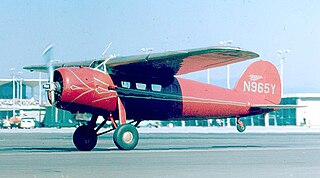
The Lockheed Vega is an American five- to seven-seat high-wing monoplane airliner built by the Lockheed Corporation starting in 1927. It became famous for its use by a number of record-breaking pilots who were attracted to its high speed and long range. Amelia Earhart became the first woman to fly solo across the Atlantic Ocean in one, and Wiley Post used his to prove the existence of the jet stream after flying around the world twice.

The PWS-24 was a Polish single-engine passenger aircraft for 4 passengers, built in PWS factory, used from 1933 to 1936 by LOT Polish Airlines. In spite of its limited capacity, it was the only series-built airliner of domestic design ever used by the LOT.
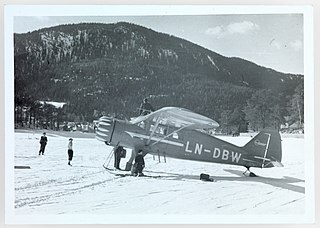
The Widerøe C.5 Polar, sometimes known as the Honningstad C.5 Polar, was a Norwegian general-purpose land or floatplane built by Widerøes Flyveselskap.

The Burnelli UB-14, also known as the Cunliffe-Owen Clyde Clipper, was a 1930s American prototype lifting-fuselage airliner designed and built by Vincent Burnelli.

The Faucett F-19 was a 1940s Peruvian eight-seat high-wing transport monoplane built by the airline Faucett Perú for its own use.
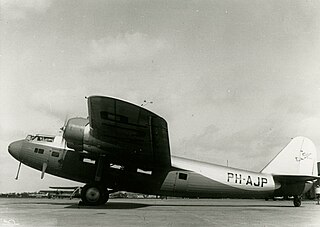
The Fokker F.XXII was a 1930s Dutch four-engined 22-passenger airliner designed and built by Fokker.

The Fokker F-14 was an American seven/nine passenger transport aircraft designed by Fokker and built by their Atlantic Aircraft factory in New Jersey.

The Piaggio P.150 was a 1950s Italian two-seat trainer designed and built by Piaggio to meet an Italian Air Force requirement to replace the North American T-6.
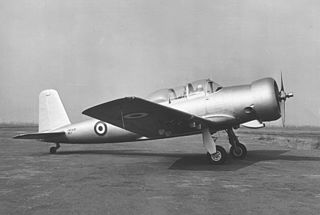
The Fiat G.49 was an Italian two-seat basic trainer designed by Giuseppe Gabrielli and built by Fiat.

The General Aircraft Monospar was a family of touring and utility aircraft designed and built by the British aviation company General Aircraft Ltd (GAL).
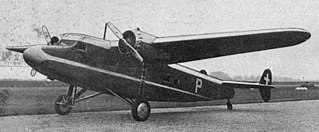
The Koolhoven F.K.50 was a 1930s Dutch eight-passenger light transport monoplane designed and built by Koolhoven.

The Saro Cloud was a British passenger amphibian flying boat designed and built by Saunders-Roe as the A.19. It was later produced as the A.29 for the Royal Air Force for pilot and navigator training.

The SIAI-Marchetti SM.102 was a 1940s Italian light transport cabin monoplane designed and built by SIAI-Marchetti.

The Boeing AT-15 was an American twin-engined bomber crew trainer designed and built by Boeing's Wichita Division. Only two prototypes, designated XAT-15, were built. Plans to build over 1,000 were cancelled on the United States' entry into the Second World War.

The Macchi MB.323 was an Italian single-engine basic training monoplane designed and built by Macchi. No orders were placed and only a prototype was built.

The Spartan C4 was an American four-seat cabin monoplane designed and built by the Spartan Aircraft Company.

The Breda Ba.32 was an Italian airliner prototype designed and built by the Breda company.
The Thaden T-1 Argonaut was a 1920s American eight-seat all-metal cabin monoplane, built by the Thaden Metal Aircraft Company of San Francisco, California.

The Zenith Z-6 is a single engine biplane U.S. airliner built in the late 1920s. Its cabin, in the fuselage immediately behind its radial engine, holds five or six passengers depending on engine power. It is flown from an open cockpit further aft. Nine were completed and one has been restored to flight.
The Vought V-326 was an American experimental aircraft used by Pratt & Whitney as a high altitude engine test bed.



















